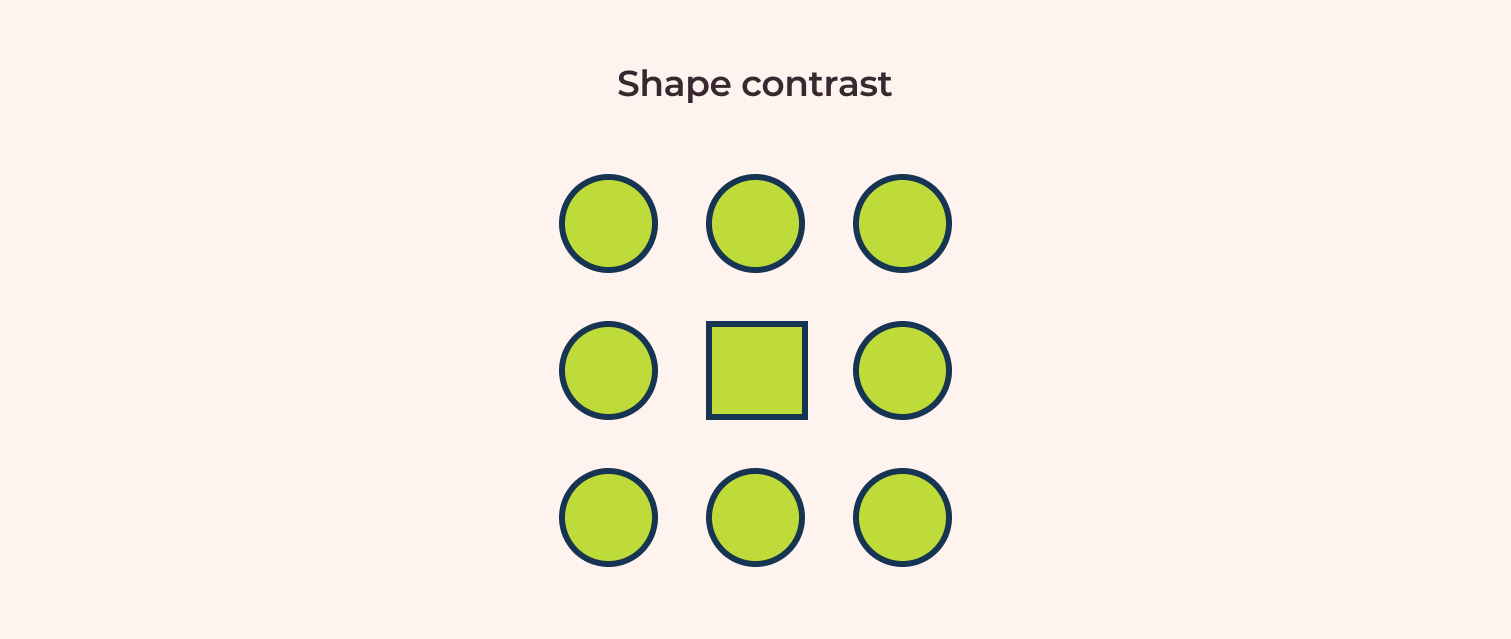Table Of Content

Hierarchy is a principle of design that establishes the most important and least important aspects of any design. You likely want to direct how your audience consumes the content you create. This natural progression of one’s eyes, from one object to another, can be controlled by the design of the content. The more you practice this principle of design, the higher the chance your brand will grow beyond just a single advertisement.

The Law of Contrast: Designing for Emphasis
Scale plays an important role in design balance and in conveying a specific message. When it comes to design, bigger is not always better—tiny elements can be just as effective in capturing attention and communicating the intended message. Contrast also contributes to good proportion, as it allows for the differentiation of elements within a composition. Ultimately, proportion impacts the overall aesthetic appeal and functionality of a design, making it an essential consideration in the creative process.
Understanding the Principles of Design Contrast
Some brands may need more order in their communications, while others thrive on chaos. The principles of design help designers follow these cues so that the content they create is easily understood and consumed by the viewers for whom it is intended. Involves using different font sizes, styles, weights, and colors to distinguish various text elements. Headings with larger and bolder fonts compared to the body text exemplify typography contrast. Contrast is used to command visual interest and direct the viewer’s attention.
Design Unity: Creating Cohesive Visual Harmony
PAW October 9, 2002: Features - Princeton University
PAW October 9, 2002: Features.
Posted: Wed, 09 Oct 2002 07:00:00 GMT [source]
It communicates information to users much more quickly than other visual elements. The contrast of shape, color, size, and other elements lets you direct the viewer to what’s most important. At the same time, web designers must still be able to pull off professional and aesthetic visuals. Like any visual form, they also need to incorporate elements that help tell a story to the viewer – at the core of which is the principle of design contrast. In their natural forms, patterns express themselves everywhere we look.
Focus and Emphasis
And is usually a combination of all those types of contrasts that will create a good design. Adding good contrast in your artwork is necessary to ensure that it will not be boring. Remember that is all about the message you want to transmit to your audience, so using good contrast will help you create visual interest in your composition.
In design, negative space is used to make the positive elements pop. The most common analogy for understanding negative space is that it's like how a hole in the wall is empty space but adds to the room rather than takes away from it. The principles of design serve as building blocks for all creative works and design projects, whether it’s classic art or digital design.
Visual hierarchy

From news consumption to entertainment, personal work to professional research, we consume content increasingly for our daily lives. In the crowded content space, design helps consumers and creators in absorbing and dissipating knowledge. Download my FREE eBook that explain the 9 principles every designer should master. Spotify recently change to a rich, varied and contemporary brand identity by using complementary colors on their new advertising. In the second lesson, you’ll learn about the science and importance of color. You’ll gain a better understanding of color modes, color schemes and color systems.
Read alsox
The principle of design used to govern the usage of white spaces comes into play with minimalist designs in a significant way. It can create balance, improve the standard or level of design, and reduce clutter. Designs with more white spaces are referred to as “clean” pieces of work. Every design in the world is different, and each artist adds their touch to their creations, yet, the principles of design remain the same.
Content Pit Review: Is it Possible to Find Fast, Inexpensive, and High Quality Content?
Some of them contradict each other, while others complement each other. As a designer, remember that there is always an opportunity to do something brilliant and significant by breaking some odd rules here and there. Making sure all of your design elements flow together nicely is a great way to give your work a professional look and feel. Balance is the most common and most important principle of every design. If you enforce unity across your creatives, your designs will begin to look dull and need more dynamism. Create refreshing pops in the sea of brand guidelines and color guides.
dot-font: Seven Principles of Typographic Contrast CreativePro Network - CreativePro Network
dot-font: Seven Principles of Typographic Contrast CreativePro Network.
Posted: Fri, 30 Oct 2015 17:40:39 GMT [source]
It adds a layer of interest for the viewer, making them look at elements with bigger sizes while having minor elements at a smaller size. Instead of one whole image, a viewer can break them into either smaller or larger parts, which helps in the storytelling aspect of an image. You will return to the principles of visual design time and time again as you continue to progress. Repetition provides rhythm to your design and helps maintain overall visual unity. Repetition occurs when an element or elements of your design appears more than once within the composition.
Patterns are a form of repetition that are attractive to the eye and aid in providing visual harmony and overall design unity. Well-proportioned designs often are not consciously noticed by your viewers. However, improper use of proportion will immediately stand out as visual elements will appear distorted or out of place. An easy exercise to understand symmetry is to take a sheet of paper and fold it vertically into two equal halves.

No comments:
Post a Comment